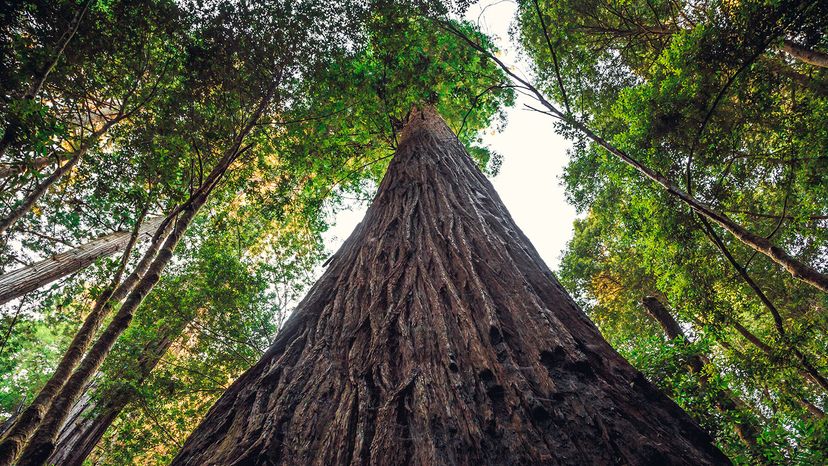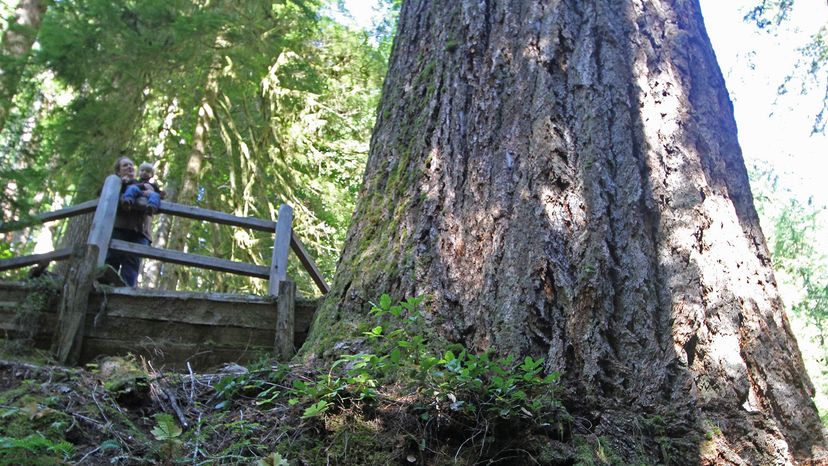Hyperion is the world's tallest living tree. This coast redwood grows on a slope, so its average height is 360 feet (116 meters) tall, and its trunk is just over 16 feet (4.94 meters) in diameter. Hyperion stands in Northern California in Redwood National Park and is estimated to be between 600 and 800 years old, which is relatively young, considering coast redwoods have been known to live over 2,000 years.
Hyperion was discovered in 2006 by two naturalists named Chris Atkins and Michael Taylor, who were bushwhacking through a remote area of Redwood National Park. The month before, they had found three other behemoth coast redwoods in a grove nearby, measuring 375 feet (114.09 meters), 371 feet (113.14 meters) and 363 feet (110.76 meters) and named them from Greek mythology: Helios, Icarus and Daedalus, respectively, These three became the tallest trees in the world for a month, until Atkins and Taylor discovered Hyperion, which was then named the world's tallest tree. The exact location of Hyperion is a secret.
So, the world's largest tree is as tall as a 35-story building, but its close neighbors aren't much shorter. It's hard to compete with coast redwoods for height, but the next six tall trees are getting there.

